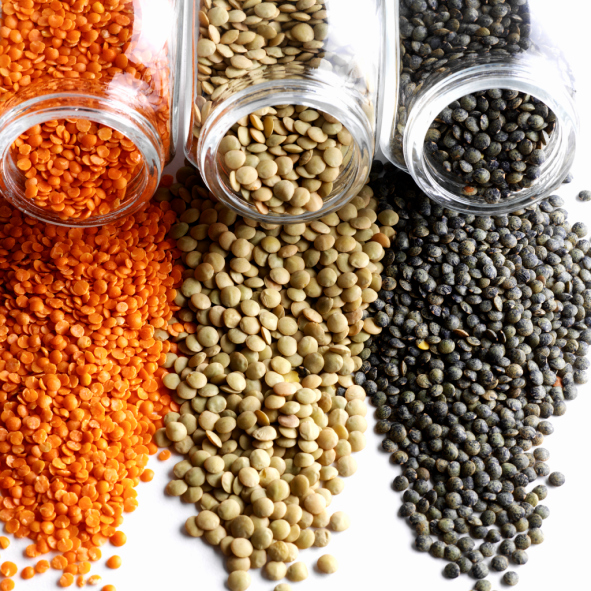Red Meat and Heart Disease: Good or Bad For Heart Health?
 Questions surrounding the consumption of red meat and its contribution to heart disease has led to varied research. A main source of the nutrient choline is red meat and carnitine is derived of amino acids which are protein building-blocks. Red meat is a rich source of protein. Hence this exploration into whether or not we have another reason to reduce red meat consumption.
Questions surrounding the consumption of red meat and its contribution to heart disease has led to varied research. A main source of the nutrient choline is red meat and carnitine is derived of amino acids which are protein building-blocks. Red meat is a rich source of protein. Hence this exploration into whether or not we have another reason to reduce red meat consumption.
What is choline?
Choline is a nutrient that plays a role in liver function, normal brain development, muscle movement, nerve function, metabolism, and sleep. Choline is also involved in absorbing and removing fat and cholesterol from the body, reducing chronic inflammation, and the kidneys control of water balance.
What is carnitine?
Beans Health Benefits: Eat Dry Beans, Peas, and Lentils for Heart Health
 Dried beans, peas, and lentils include kidney beans, navy beans, chickpeas, Great Northern beans, black-eyed peas, split peas, and lima beans.
Dried beans, peas, and lentils include kidney beans, navy beans, chickpeas, Great Northern beans, black-eyed peas, split peas, and lima beans.
Dry beans, peas and lentils are a very economical option for adding protein and nutrients to your diet with a 1-pound costing an average of $0.15 per serving for dry beans and between $0.35 to $0.50 per serving depending on brand for canned beans.
Beans Health Benefits: Dry beans, peas, and lentils are highly nutritious
— Contain almost twice the protein of whole grains and all nine essential amino acids
— Provide both soluble and insoluble fiber
— Low in sodium. If prepared without added salt contain they contain almost no sodium. Canned options are higher in sodium. Select “low sodium” or “no added salt” options. Draining and rinsing canned beans, peas and lentils reduces sodium content by 41%.
— Contain almost no fat. Fat content depends on what is added during preparation.
— A plant source of iron. Plant iron sources are a little harder for the body to absorb. To boost iron absorption, combine with foods contains vitamin C.
— Rich source of magnesium, zinc, and potassium.
— Gluten-free
10 Heart Health Facts and Myths

Much of what you think you know about high blood pressure, or hypertension, may be based on outdated information. “You may think, for example, that being diagnosed with prehypertension isn’t a big deal, especially if you’re in your 20s or 30s. You may feel fine. But we’re now learning that even slightly elevated blood pressure over a prolonged time can have serious consequences.
Felicia Stoler, DCN says science is evolving so quickly that it’s sometimes difficult to keep up with what we should and shouldn’t be doing to manage our health. Research on blood pressure is no exception. Here are the ten common myths Stoler hears most frequently.
Myth #1: Blood pressure in the 120/80 range is ideal.
Fact: “Just as over the years, health experts have dropped the acceptable limits with respect to cholesterol and blood sugar, the same is now happening with blood pressure. Experts are re-thinking what’s healthy. Too many people who have blood pressure in the 120/80 range are developing heart disease. What’s more: we’re discovering that young people are at greater risk for developing heart disease later in life than we once thought.
“The CARDIA study, conducted by researchers at multiple locations including Johns Hopkins University, Northwestern University, University of Minnesota and the National Heart, Lung and Blood Institute, followed nearly 2,500 healthy men and women from early adulthood (ages 18 to 30), for 25 years. The results revealed that those whose blood pressure was in the prehypertension range – between 120/80 and 139/89 – while they were still under 30, were more likely to have signs of heart disease when they reached middle age. Specifically, they were at higher risk of developing problems with their heart’s left ventricle.
“Results of the SPRINT study were presented at the American Heart Association annual meeting. In that study, about 9,300 participants were seen regularly for four to eight years by blood pressure management experts. Researchers determined that maintaining blood pressure below the commonly recommended systolic target of 120 significantly reduced rates of cardiovascular disease and lowered the risk of death among adults age 50 and older diagnosed with high blood pressure. As a result of this study, the American Heart Association now suggests that blood pressure of 120/80 is the new lower limit for hypertension.”
Myth #2: You’ll notice symptoms if you have elevated blood pressure.
Fact: “That’s the challenge with high blood pressure as well as high cholesterol. There may not be any noticeable warning signs, or they may seem so insignificant that you just ignore them. That’s why high blood pressure is often called the silent killer. For example, some people with high blood pressure may get headaches but attribute them to stress. Left unmanaged, high blood pressure can affect your overall health. That’s why even eye doctors and dentists will check your blood pressure during your appointments.”
Continue reading
Boost Heart Health with High Intensity Interval Training

Short bursts of high intensity interval training may provide a more realistic alternative for preventing and managing Type 2 diabetes, as well as promoting weight loss, according to a paper published in Obesity Reviews.
This was a meta-analysis, meaning researchers searched databases to review multiple studies examining the effects of high-intensity interval training (HIIT) on specific health parameters. In this case, 50 studies were included in the research, paying particular attention to insulin resistance, blood glucose, hemoglobin A1c, body weight, and cardiorespiratory fitness.
Researchers found short bursts of vigorous activity in quick succession to be more “effective” when compared to longer forms of exercise in regards to how the body uses and stores blood sugar.
A majority of individuals diagnosed with type 2 diabetes are also classified as overweight or obese. Type 2 diabetes impacts your entire body: vision, kidneys, heart, etc. If you have high triglycerides, this is an indicator for greater risk for developing type 2 diabetes.
Treatment plans for type II diabetes, high triglycerides, and weight management included diet and physical activity.
The effects of exercise on the body’s insulin sensitivity and ability to utilize blood sugar are well proven. The effects of exercise on weight management is debatable.
Continue reading
How Carb-Loading Negatively Impacts Heart Health

Carbohydrate loading (aka carb-loading) is often used by athletes to maximize the amount of fuel stored in muscle and readily available for use during competition.
Researchers from Vanderbilt and the University of Alabama at Birmingham studied the impact of an acute carbohydrate load in the form of a 264-calorie shake on the production of the hormone atrial natriuretic peptide (ANP). ANP works in the body to eliminate excess salt and lower blood pressure.
Those who are obese produce less ANP. This contributes to more issues with salt retention and high blood pressure.
The study included 33 individuals with normal blood pressure levels. Prior to completing the study, participants followed a standard diet for a couple days to prevent dietary variability from impacting results. Their blood levels of ANP were then analyzed for twenty-four hours after consuming the 264 calorie carbohydrate shake.
There are 4 calories per 1 gram of carbohydrate. A 264 calorie shake equals 66 grams of carbohydrates.
A 20-ounce bottle of Coca Cola contains 65 grams of carbohydrates.
The Beat on Resting Heart Rate (infographic)
See the below infographic highlighting the aggregated and anonymous resting heart rate data of over 1 million Fitbit users. Fitbit found a strong correlation between resting heart rate and two key health metrics: body mass index and moderate to intense daily activity. Check out some of the key data points about resting heart rate below, as well as tips on how to keep your heart healthy during the month of February and beyond.
Click to enlarge.
Continue reading



